Hour 13:05
21 Oct 25
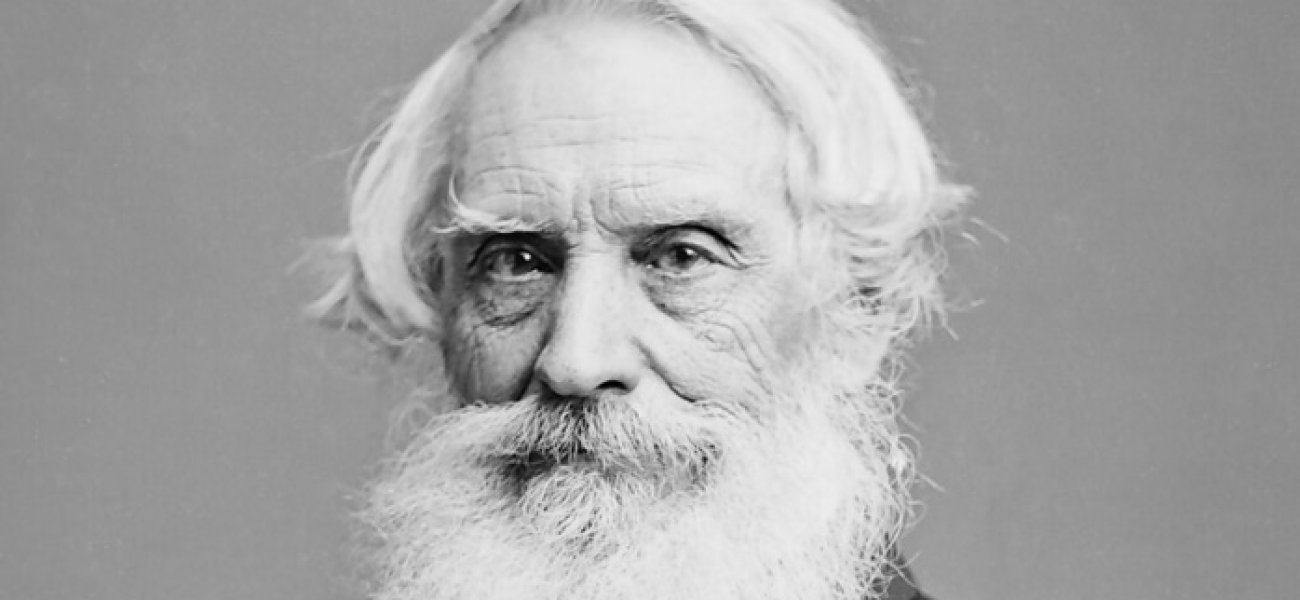
The telegraph was invented by Samuel Finley Breese Morse (the famous Morse) around the final year of Fath-Ali Shah Qajar’s reign. The first telegraph line was inaugurated on May 24, 1844 (6 Jumada al-Awwal 1260 AH) between Washington and Baltimore.
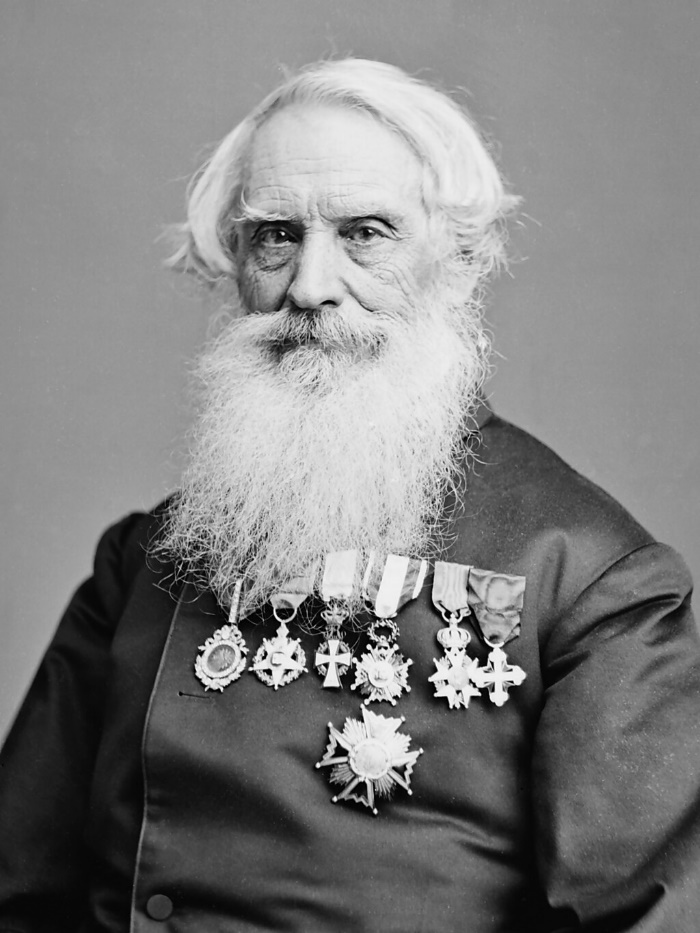
Samuel Finley Breese Morse
However, Iranians remained entirely unaware of this important invention for nearly ten years, until the 17th of Shavval, 1270 AH / July 13, 1853 AD, during the reign of Naser al-Din Shah. On that day, the newspaper “Vaqaye‘-e Ettefaqieh” informed the residents of Tehran of this significant news as follows:
"The wire of the ‘fire wheel’, which is used to send messages from one city to another and has become common in most cities in the West, has now been stretched in India from Agra to Calcutta, a distance of two hundred Farsakhs (a unit of measurement roughly equivalent to 6 kilometres), and the path has been covered."
Interestingly, the newspaper’s translator continued to refer to this invention as the "fire wheel" and "lightning wheel" in related news for some time. The term "telegraph" was first used in newspapers from Istanbul and entered the Persian language when news from those papers was translated in “Vaqaye‘-e Ettefaqieh”:
"Furthermore, the newspapers of Istanbul have written that the path of the wire and fire wheel, used to send messages in Europe and India, is being constructed to connect with other telegraph lines already built, which they call 'telegraph'."
During this time, Mirza Agha Khan Nouri, the grand vizier of Naser al-Din Shah, was informed through Prince Ali-Qoli Mirza E‘tezad al-Saltaneh—Fath-Ali Shah’s 54th son, a cultured and scholarly man who was the head of the Dar al-Fonun School (and later became Iran’s first Minister of Science)—that Monsieur Kříž, a Czech teacher of artillery at Dar al-Fonun, was knowledgeable about the way in which the telegraph device operates.
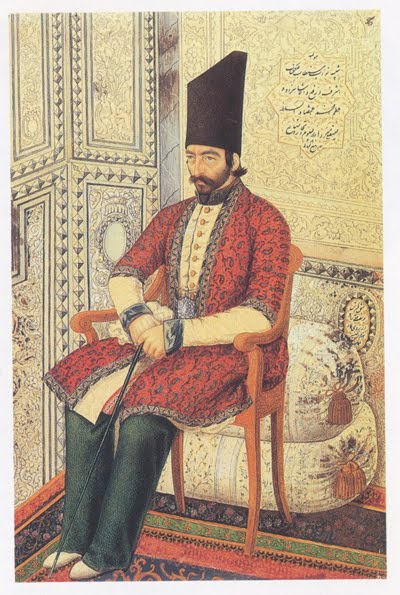
Caption: Prince Ali-Qoli Mirza E‘tezad al-Saltaneh — Head of the Dar al-Fonun School and the first Minister of Science in Iran
Mirza Agha Khan Nouri reported this to Naser al-Din Shah, which paved the way for utilising this useful invention in the Naseri capital. Mirza Agha Khan Nouri, eager to showcase his competence, with the Shah's permission, immediately began laying the telegraph line from the painting room of the royal private quarters in Golestan Palace to the upper mansion of the Lalezar Garden.
The wiring and installation of the telegraph device in Golestan Palace and Lalezar Garden were completed on Sunday, 10 Ramadan 1274 AH / April 24, 1858 AD, and Tehran’s first telegraph line, covering just a few kilometres, was inaugurated by Naser al-Din Shah himself.
As operators of the device in the painting room of Golestan Palace, two artillery students from Dar al-Fonun—Mohammad Sadeq Khan Qajar and Mohammad Taqi Khan—were appointed. On the Lalezar side, Mirza Fazlollah and Mohammad Hossein Khan Esfahani transmitted the first telegraph messages in Iran. The Shah was greatly pleased with the quality of the exchanged messages and rewarded E‘tezad al-Saltaneh with a white colonel’s sash and a piece of shawl as a robe of honour and gave Monsieur Kříž a 100-toman to express his gratitude.
Having witnessed firsthand the usefulness of this extraordinary means of communication, Naser al-Din Shah ordered a telegraph line to be installed between Tehran and Chaman-e Soltaniyeh (35 km from Zanjan and 2 km north of the city of Soltaniyeh). Realizing that a telegraph line between Tehran and Tabriz would allow him to quickly receive updates on the crown prince, Mozaffar al-Din Mirza (later Mozaffar al-Din Shah), and the situation in Azerbaijan, the Shah commanded that the wire be extended from Soltaniyeh to Zanjan and then to Tabriz.
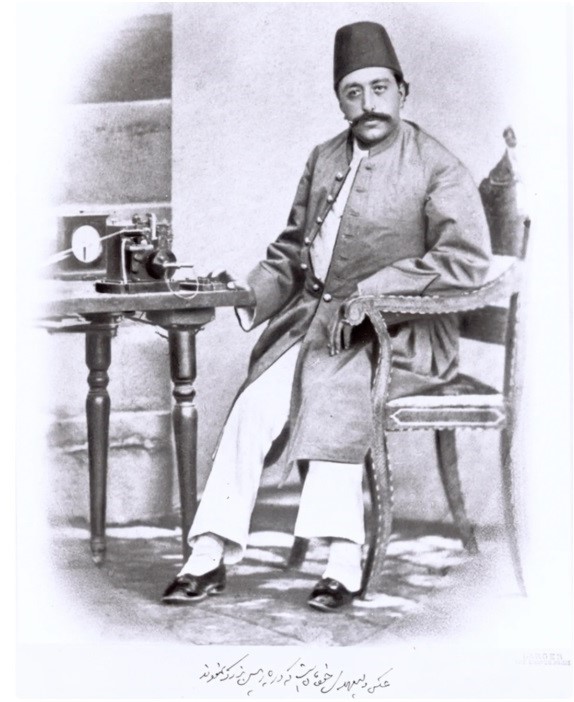
Caption: Mozaffar al-Din Mirza, the Crown Prince, beside a telegraph device. The location of the photograph is unknown. Naser al-Din Shah has written in his own handwriting beneath the photo: “A photo of our own Crown Prince, who was raised in Paris.”
In 1276 AH / 1859 AD, Aliqoli Khan Hedayat was appointed as head of all telegraph offices in Iran and given the title "Mokhber al-Dowleh" (State News bearer), a title still remembered today as the name of a crossroad "Mokhber al-Dowleh” located in Tehran, at the intersection of Jomhouri Islami and Sa‘di streets—named after the Hosseiniyeh (religious hall) that he had built in the area.
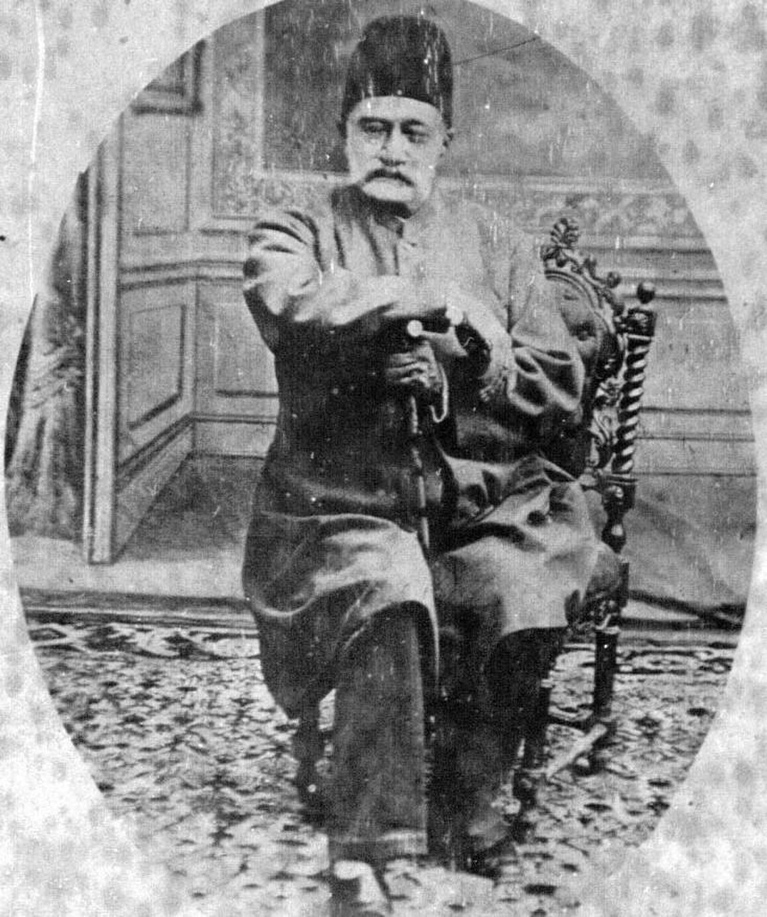
Caption: Aliqoli Khan Hedayat, known as Mokhber al-Dowleh — Head of the Telegraph Offices of Iran.
It was not long before Naser al-Din Shah ordered a telegraph device to be installed in Niavaran in order to stay informed about the situation in the capital during his summer stays there. This became especially crucial when Tehran repeatedly suffered from cholera outbreaks, leading to the Shah and his harem fleeing to the summer retreat. At such times, the best way to stay in contact with those still in the affected area—meaning Tehran—was the telegraph. During the COVID-19 pandemic we ourselves witnessed how telephones and similar communication devices became the safest means of contact.
Thus, E‘tezad al-Saltaneh—who was at the time in charge of the nation’s telegraph affairs—had a telegraph device installed in Niavaran in 1274 AH / 1857 AD. The installation served as an excuse for a grand celebration, which is recorded in detail in the chronicles of the era.
The first telegraph message to Niavaran was sent from the Dar al-Fonun School on 2 Sha‘ban 1274 AH / March 18, 1858 AD. The first official royal message was a congratulatory note from the grand vizier to Naser al-Din Shah on the inauguration of the telegraph line, sent from the Royal Citadel of Tehran (Golestan Palace) to the Niavaran Palace.
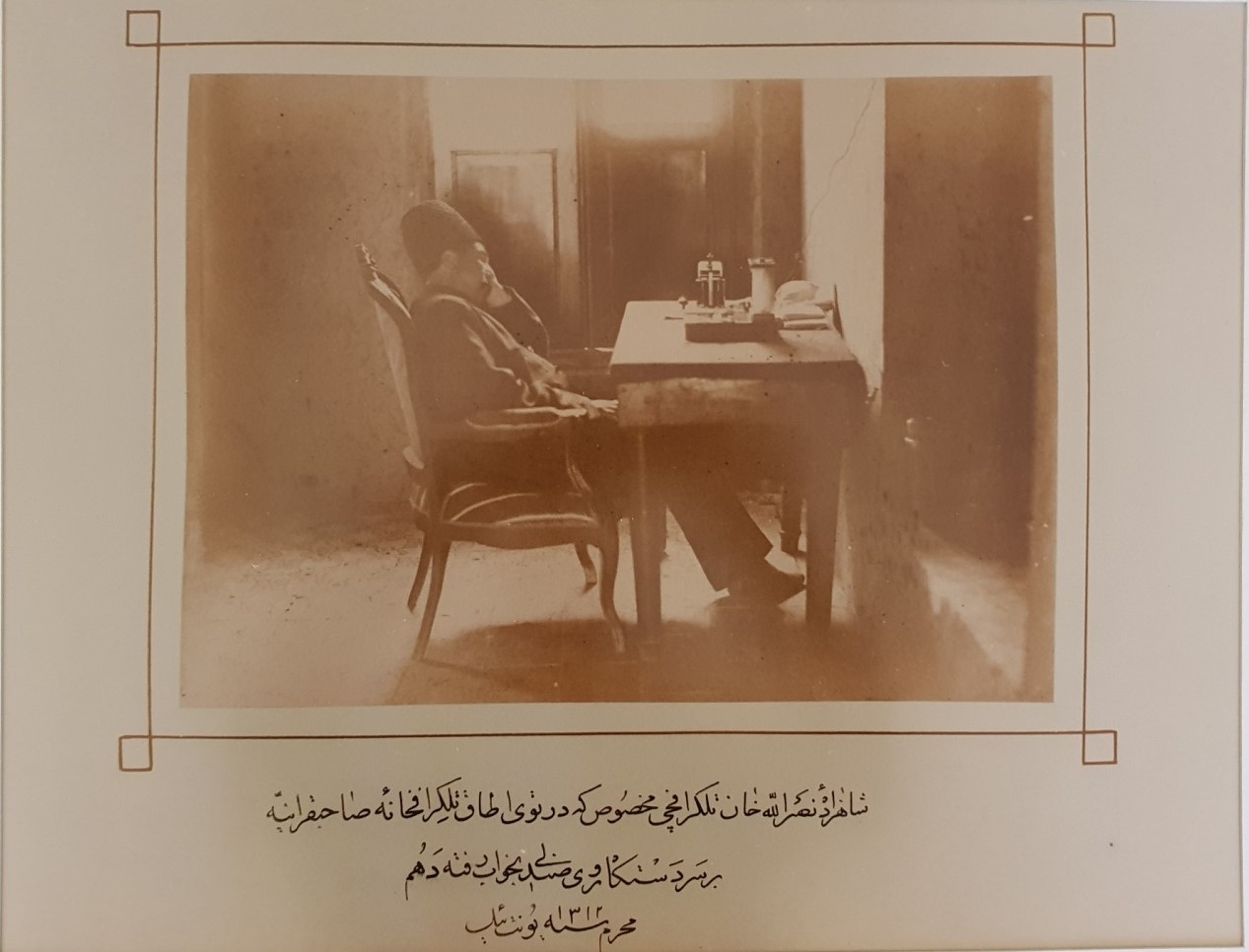
Caption: Prince Nasrollah Khan (the royal telegraph operator), asleep on a chair at the telegraph device inside the Sahibqaraniyeh Telegraph Room. 10th of Muharram, 1312 AH / July 14, 1894 AD.